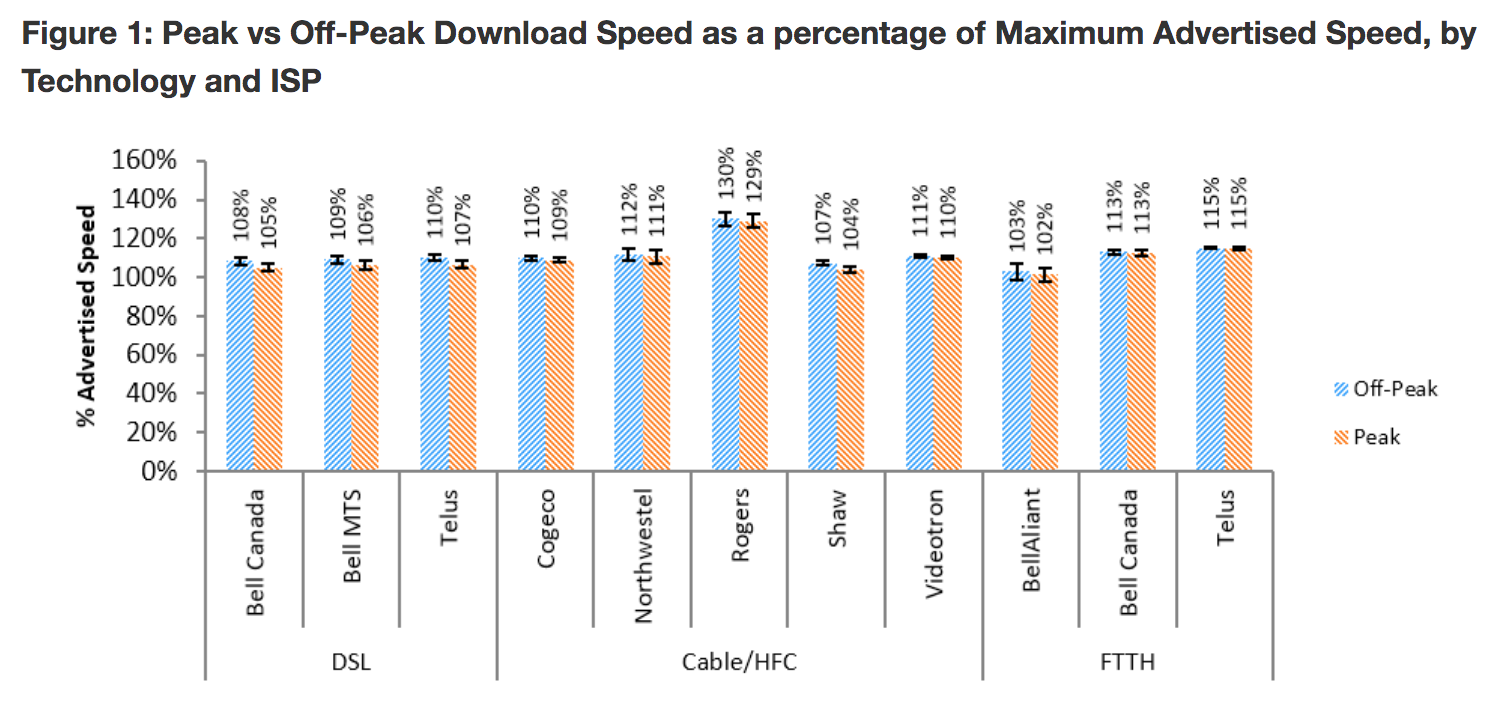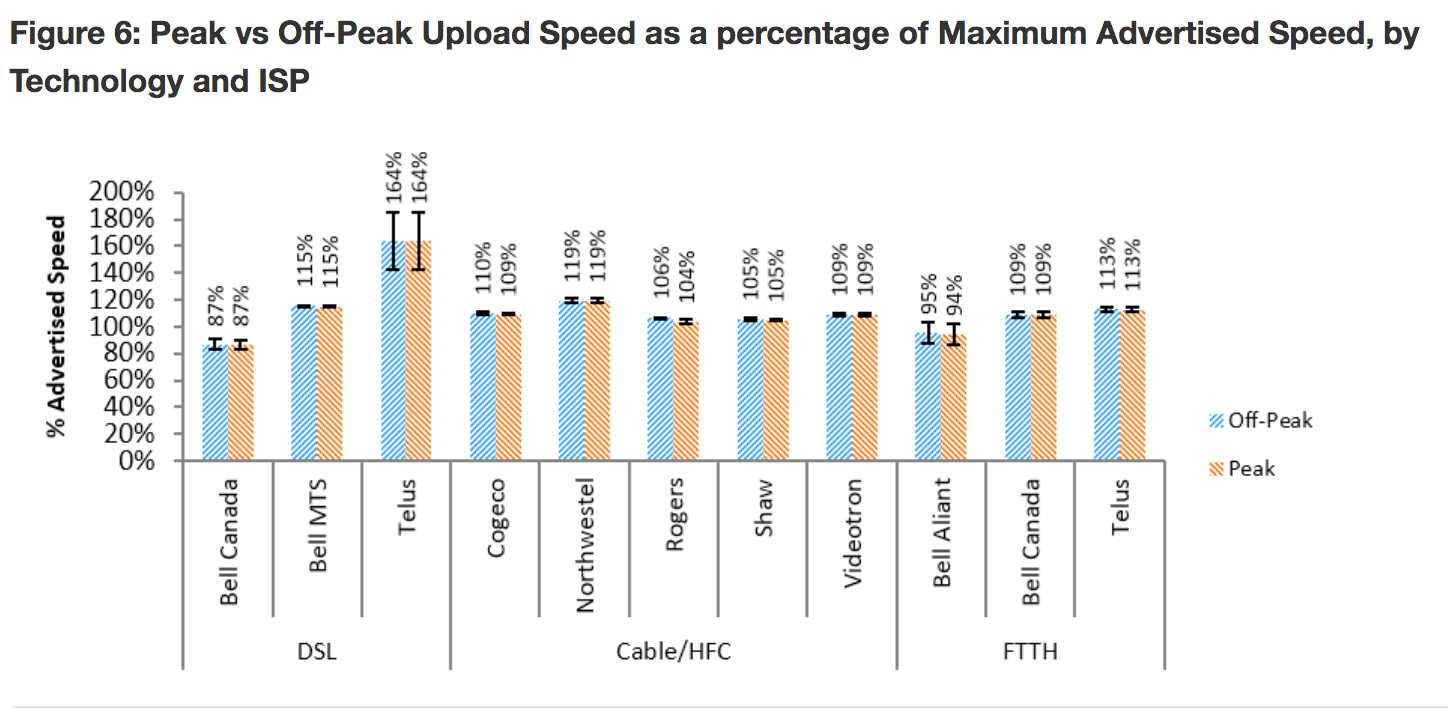
The Canadian Radio-television and Telecommunications Commission (CRTC) has released a new report that finds consumers are receiving maximum advertised internet speeds.
“The test data for this report finds that all major Canadian ISPs are delivering users with average download speeds that exceed maximum advertised rates and that overprovisioning (providing users with additional throughput) is common,” the report reads.
It’s important to note that the data from the report was collected between October 1st to 31st of 2019. Testing was performed using a device called a ‘Whitebox,’ which connects to a customer’s router and performs routine tests that measure factors like upload, download and latency.
Bell Aliant, Bell Canada, Bell MTS, Rogers, Telus, Shaw Communications, Cogeco, Northwestel and Vidéotron participated in the voluntary study.
Average download speeds for users exceeded those advertised across all ISPs included in the report, ranging from 102 percent during peak hours for Bell Aliant FTTH to 129 percent for Rogers Cable/HFC.
“The only internet packages included in this report that did not meet the advertised maximum download speeds were Bell Canada’s DSL 100x10Mbps and Shaw’s Cable/HFC 300x15Mbps at a respective 93 percent and 99 percent,” the report reads.
In terms of upload speeds, the CRTC notes that most ISPs delivered their advertised speeds. Telus delivered the highest at 164 percent on DSL. Northwestel Cable/HFC and Bell MTS DSL also delivered high upload performances at 119 percent and 115 percent respectively.
The tiers tested for Bell Aliant and Bell Canada were lower than 100 percent with 94 percent and 87 percent during peak hours.
“Bell Canada’s average upload was noticeably lower across the DSL 15×10, DSL 25×10, and DSL 50x10Mbps tiers, which tested at a respective 71 percent, 77 percent, and 91 percent of advertised maximum speeds,” the report notes.
Further, the report outlines that download and upload speeds did not decrease significantly during peak hours, which the CRTC says shows that networks are well provisioned to cope with increased user activity.
The report found that the average latency during peak hours was four milliseconds for users on fiber connections and a respective 12 and 14 milliseconds for users on DSL and Cable/HFC connections.
“As with the previous chart’s results, latency shows no real-world difference between peak and off-peak hours, and are indicative of an infrastructure that is well provisioned to handle increased user activity in the evenings” the report reads.
Average webpage loading times for popular websites was under three seconds, while the majority of users were able to fully load webpages between 1.3 and 2.4 seconds.
Load times were around 0.7 seconds faster for users on internet packages with download speeds of 25Mbps or higher, but there wasn’t much improvement as speeds increased to the 600Mbps range.
“While the data was collected prior to the COVID-19 pandemic, we are encouraged by the results that show that Canadians generally receive the internet speeds for which they pay,” said CRTC chairperson Ian Scott, in a news release.
The CRTC compiled this report by commissioning SamKnows, a U.K.-based company that specializes in broadband measurement, to conduct a study of services sold to Canadian consumers.
SamKnows deployed 3,266 Whiteboxes to Canadian consumers as part of the study, which followed pre-defined test schedules. Data for each Whitebox was aggregated through a trimmed mean for download, upload, latency, and webpage loading time metrics.
Image credit: CRTC
Source: CRTC





